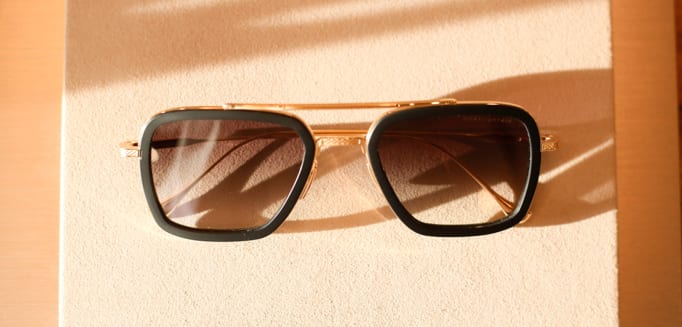What if we told you that your visual eye disorders could be corrected using the help of a virtual reality game? Vision therapy is a non-invasive approach to treating visual impairments in children and adults, such as lazy eye (amblyopia), crossed eyes (strabismus), misalignment, and focusing issues.
Generally, it is best to have amblyopia treated while still a young child, but adults can find success with treatment. Strabismus, on the other hand, should be corrected at around 6 months of age, as it may get worse with age and without treatment.
A vision therapy program can assist patients in developing or improving their visual skills and changing how they perceive or interpret visual information, helping them see better and reducing discomfort associated with their vision. It all starts with an eye exam.
Amblyopia vs. Strabismus
Strabismus, or crossed-eyes, is a disorder with eye alignment where both eyes do not look in the same direction at the same time. Amblyopia, also known as lazy eye, is a disorder with visual awareness or eyesight. A vision therapy professional can help with both strabismus and amblyopia.
Many people believe a person with crossed or twisted eyes has a lazy eye. However, amblyopia and strabismus are not the same ailments.
What Is Amblyopia?
Amblyopia, often known as lazy eye, is a condition characterized by impaired vision in one eye that is not promptly correctable due to unusual visual development during childhood. Amblyopia can damage both eyes in some situations.
Regardless of whether it affects one or both eyes, amblyopia is treatable with early discovery and treatment during childhood. Untreated amblyopia can result in permanent vision loss and blindness in the affected eye.
Amblyopia affects an estimated 2.4% of the North American population.
What Causes Amblyopia?
Amblyopia is most commonly caused by neglecting an unbalanced glasses prescription or having crossed eyes. If a prescription discrepancy is not corrected, the eye with the lower prescription will detect all visual information and send it to the brain, while the eye with the higher prescription will look blurry, and the brain will disregard the information coming from the impacted eye. The connection between the damaged eye and the brain decreases with time, causing amblyopia in that eye.
Glasses cannot immediately resolve the issue since there is no connection between the eye and the brain.
Less common causes of amblyopia are inherited cataracts, corneal injuries, and corneal dystrophies. Other less frequent causes of visual hardship, which all result from one or both eyes not getting enough visual information, can also cause amblyopia due to a poor link to the brain.
How Is Amblyopia Diagnosed?
The best technique to check for amblyopia is through routine eye exams. The best chance for recovery will come from early discovery and prompt treatment.
Amblyopia Treatment
The first stage of treatment is to address the underlying cause of amblyopia.
When an untreated refractive error causes amblyopia, glasses are prescribed to allow the amblyopic eye to achieve clearer vision. Vision therapy can also be for improving the amblyopic eye.
When strabismus causes amblyopia, glasses can be prescribed to assist in correcting the eyes. In some circumstances, vision therapy and surgery could be required to align the eyes.
Inherited cataracts that cause amblyopia are surgically removed to allow the affected eye to receive proper stimulation to see.
Other possibilities for treatment include atropine eye drops, anti-suppression training, and visual learning.
What Is Strabismus?
Strabismus is a muscular condition that causes your eyes to be misaligned with one another, resulting in double vision or suppression of an image from the impacted eye. One or both of your eyes may turn in, out, up, or down.
What Causes Strabismus?
In your first 6 to 8 years, your eyes’ synchronization and ability to work together develop. Strabismus can occur when your eyes, or, more accurately, your eye muscles, do not work properly together. It is often genetic but can also happen because of an eye injury or disease.
Strabismus Treatment
Strabismus can be treated with glasses (single vision or bifocal), prisms, vision therapy, and, in some situations, surgery. Strabismus can be fixed successfully if diagnosed and treated early.
Vision Therapy As Treatment
Vision Therapy is eye and brain physical therapy. It is critical not to overlook how important the brain is in perception. In truth, we see with our brains rather than our eyes. Vision therapy is based on neuroplasticity, and its process is similar to occupational and speech therapy therapy.
When evaluating the need for vision treatment, we learn about the requirements of every patient and design a personalized program that may contain the following components:
- Weekly in-office treatments lasting 50 minutes per session
- Progressive exercises or treatments carried out under the guidance of a doctor
- Homework exercises
- Virtual reality therapy training
- Vivid Vision
Vivid Vision
Patients who received vision therapy may be able to use Vivid Vision. The method treats amblyopia, strabismus, and convergence abnormalities, which can influence eye alignment and muscle action. Vivid Vision is appropriate for people of all ages.
Our specialists customize the program to each patient’s requirements, assigning appropriate exercises and vision evaluations to be completed at home or in the clinic.
Better Now Than Later
Foresee Eyecare is constantly striving toward perfection. We help address your needs with thoughtful, customized solutions, whether giving thorough eye exams, glasses fittings, specialty services such as vision therapy for visual disorders, or just a chat.
If you’re experiencing amblyopia or strabismus, schedule an appointment with our team today, and we can develop a customized treatment plan for you.



















